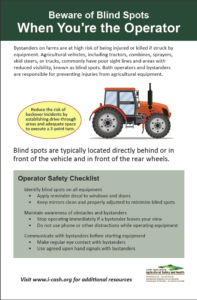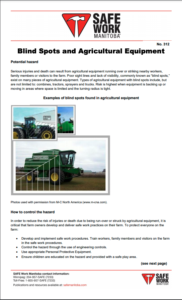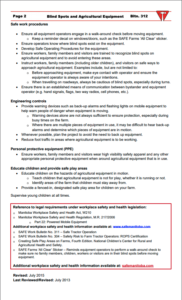The operator of agricultural equipment and potential bystanders both play crucial roles when it comes to bystander safety. It is important to note that blind spots for agricultural vehicles differ from one vehicle to another, including tractors, combines, sprayers, and skid steers. We have provided bystander and operator safety checklists for identifying blind spots, maintaining awareness of the equipment, and communicating before starting the equipment.
The bystander(s) and the operator should communicate about the use of hand signals before starting the equipment. Although there are standard hand signals, both the bystander(s) and the operator should use agreed-upon hand signals. The bystander(s) and the operator need to know how to communicate with one another.
This summer’s campaign was supported by the Iowa Department of Public Health’s State Office of Rural Health.
Listen to our radio PSA!
Bystander and Operator Checklists
Click here for our printable PDF!
The Canadian Centre for Occupational Health and Safety states that it’s important to understand that blind spots vary from vehicle to vehicle. Generally, blind spots are located directly behind the vehicle, to the side of the vehicle, and directly in front of the vehicle’s hood. The exact locations of blind spots are not as simple and may change based on the operator’s height.
Safe Work Manitoba
Related Safety Watch Article:
Be aware of equipment blind spots to keep bystanders safe, Brandi Janssen, June 2021





